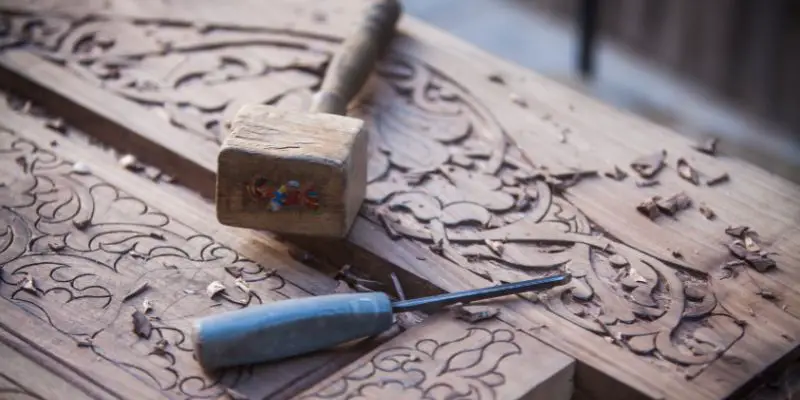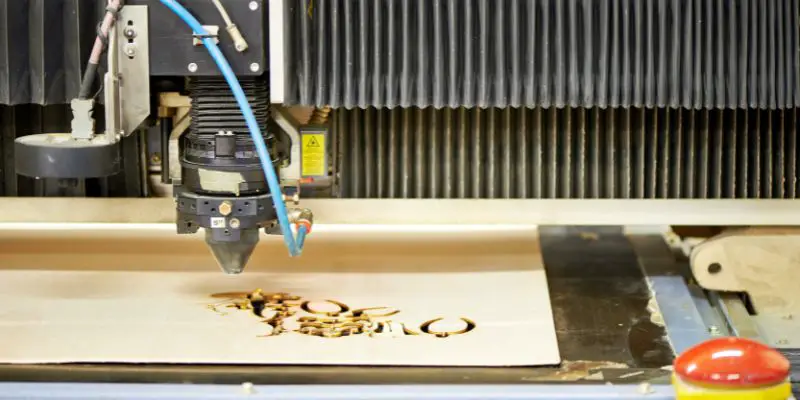To engrave wood, start by selecting a high-quality wood and designing the desired pattern or text. Then, use a wood engraving tool to carve the design onto the wood’s surface, ensuring smooth and precise strokes for a professional finish.
Wood engraving is a timeless art form that adds a touch of elegance and uniqueness to various wooden items. Whether you want to personalize a gift or create custom decor, learning how to engrave wood can be a valuable skill.
With the right tools and techniques, you can transform plain wood into stunning pieces of art. In this guide, we’ll explore the step-by-step process of engraving wood and provide helpful tips to achieve exceptional results. Whether you’re a beginner or a seasoned woodworker, mastering the art of wood engraving can open up a world of creative possibilities.
Selecting Species For Best Results
When engraving wood, the choice of wood species plays a crucial role in achieving the best results. Selecting the right type of wood for engraving can significantly impact the clarity, contrast, and overall appearance of the engraved design. Considerations for grain and hardness are important factors to keep in mind when selecting the ideal wood species for engraving.
Considerations For Grain And Hardness
Grain pattern and hardness are two key considerations when choosing wood for engraving. The grain of the wood can either enhance or detract from the engraved design, depending on the desired effect. Hardness is another crucial factor to consider, as it directly affects the ease of engraving and the level of detail that can be achieved.
Popular Wood Types For Engraving
When it comes to engraving, certain wood species are particularly well-suited for achieving high-quality results. Here are some popular wood types often used for engraving:
- Maple: Known for its fine, consistent grain and moderate hardness, making it an excellent choice for detailed engraving.
- Cherry: Offers a smooth surface and a beautiful, reddish-brown color, ideal for creating striking engraved patterns.
- Walnut: Renowned for its rich, dark color and moderate hardness, making it suitable for intricate engravings with excellent contrast.
- Alder: With a straight grain and medium hardness, alder is a versatile choice for engraving a variety of designs.
Sanding Techniques For A Smooth Canvas
When it comes to engraving wood, achieving a smooth surface is essential for a flawless finished product. One of the key steps in achieving a smooth canvas for wood engraving is mastering the art of sanding. The right sanding techniques can make all the difference in preparing the wood for engraving, ensuring an even and polished surface for your design to shine. Let’s explore the importance of starting with a coarse grit and the steps to progress to fine grits for a seamless wood engraving experience.

Importance Of Starting With A Coarse Grit
Starting with a coarse grit sandpaper is crucial to smoothen the initial rough surfaces of the wood. This helps to remove any imperfections, rough spots, or uneven surfaces, providing a uniform base for the engraving process. Utilizing a coarse grit allows for efficient material removal, saving time and effort in the later stages of sanding. Moreover, it sets the foundation for a seamless transition to finer grits, ensuring that the wood surface is ready for the intricate engraving process.
Steps To Progress To Fine Grits
- After sanding with coarse grit, it’s essential to progressively move to finer grits to achieve a smooth canvas for wood engraving.
- Gradually move to medium grit sandpaper to further refine the surface, removing any visible scratches or uneven patches left by the coarse grit sandpaper.
- Finally, advance to fine grit sandpaper to create a velvety-smooth surface, ensuring that the wood is prepped to perfection for your engraving design.
Mastering The Engraver’s Toolbox
Engraving on wood is a timeless art form that requires skill, precision, and the right set of tools. To become a proficient wood engraver, it is crucial to master the engraver’s toolbox, which includes an array of diverse tools and techniques. Understanding the intricacies of each tool and its unique effects is essential for creating stunning wood engravings.
Diverse Tools For Different Effects
Wood engraving offers a multitude of creative possibilities, and the choice of tools greatly influences the outcome. From traditional hand tools to modern power engraving equipment, each tool produces distinct effects that cater to various artistic visions. Here’s a breakdown of the diverse tools and their effects:
| Tool Type | Effect |
|---|---|
| Hand Engraving Tools | Delicate and intricate detailing, personalized touch |
| Rotary Engraving Machine | Precision and speed, suitable for intricate designs |
| Laser Engraving Equipment | Highly precise, customizable designs, consistent results |
Hand Engraving Vs. Power Engraving Tips
Choosing between hand engraving and power engraving involves understanding the unique tips and techniques associated with each method. While hand engraving offers a personal touch and intricate precision, power engraving provides efficiency and consistency. Here are some essential tips for mastering hand engraving and power engraving:
- Hand Engraving Tips:
- Practice proper grip and control for steady hand movements
- Select appropriate chisels, gouges, and carving knives for different wood grains
- Finesse engraving details with light, controlled strokes
- Power Engraving Tips:
- Adjust engraving speed and depth settings for optimal results
- Utilize suitable cutter shapes and sizes for varied design elements
- Secure wood firmly to prevent vibrations and ensure precise engraving
Transferring Your Design With Precision
In the realm of wood engraving, the precision in transferring your design onto the wooden surface determines the success of the final product. It requires a methodical approach and attention to detail to maintain design integrity throughout the engraving process. In this section, we will explore the techniques for accurate design transfer and provide essential tips to ensure each engraving reflects your original design with utmost precision.
Techniques For Accurate Design Transfer
When it comes to transferring your design onto wood for engraving, precision is key. There are several techniques that can be used to ensure the accurate transfer of your design:
- Carbon paper transfer: This method involves placing carbon paper between the design and the wood surface and tracing over the design with a pen or pencil. The carbon on the paper transfers the design onto the wood.
- Image transfer fluid: Utilizing specialized image transfer fluid, you can print your design onto a non-porous surface and then transfer it onto the wood, ensuring an accurate and detailed replication of your original design.
- Stencil transfer: Creating a stencil of your design and using a stencil brush to apply paint or ink onto the wood surface can result in a precise transfer of the design.
Tips To Maintain Design Integrity
To maintain the integrity of your design throughout the engraving process, consider the following tips:
- Secure the design: Once transferred, it is essential to secure the design onto the wood surface using tape or adhesive to prevent any movement or smudging during the engraving process.
- Use the right tools: Selecting the appropriate engraving tools and ensuring they are sharp and well-maintained will help maintain the intricacy and precision of the design throughout the engraving process.
- Work methodically: When engraving, start from the center of the design and work outwards, maintaining a steady and consistent pressure to ensure uniform depth and accuracy.
Sealing And Preserving Engraved Wood
Once you’ve created a beautiful wood engraving, it’s important to seal and preserve the wood to ensure that the engraving stands the test of time. By using the right finishes and taking proper maintenance steps, you can protect the wood and enhance the visual impact of the engraving.
Best Finishes For Enhancing Engravings
Choosing the right finish for your engraved wood is crucial in bringing out the beauty of the design. Lacquer, polyurethane, and linseed oil are popular choices for sealing and protecting wood engravings. These finishes not only enhance the depth and contrast of the engraving but also provide long-lasting protection against moisture and abrasion.

Steps For Applying Finish And Maintenance Tips
Applying finish to your wood engraving can be a straightforward process if done correctly. Here are the basic steps:
- Clean the surface of the wood engraving thoroughly to remove any dust or debris.
- Apply the chosen finish using a brush or cloth, following the manufacturer’s instructions for the best results.
- Allow the finish to dry completely before handling the engraved wood.
- For maintenance, regularly dust the surface with a soft cloth and avoid using harsh cleaning agents that can damage the finish.
By following these simple steps and taking proper maintenance measures, you can ensure that your engraved wood remains in pristine condition for years to come.
Frequently Asked Questions Of How To Engrave Wood
How Can You Engrave On Wood?
You can engrave on wood using a laser engraver or a wood-burning tool. Choose a design, set the machine, and carefully follow safety precautions. Sand the wood beforehand for a smoother finish, and test on a scrap piece first. Experiment with different settings for depth and detail.
What Is Best For Engraving Wood?
The best tool for engraving wood is a rotary tool with diamond bits. It provides precise and intricate designs, making it ideal for woodworking projects.
What Is The Technique Of Wood Engraving?
Wood engraving is a printmaking technique where the design is carved into the end grain of a wood block. Ink is then applied to the surface and transferred onto paper, creating a detailed and textured image. This method allows for precise lines and intricate details in the final print.
How Do You Personalise Wood?
To personalise wood, you can use techniques like engraving, carving, or wood burning. You can also add custom designs, names, or messages to create unique, personalised pieces. These methods offer a special touch to wood products and gifts.
Conclusion
Engraving wood is a timeless craft that allows for endless creative possibilities. With the right tools and techniques, anyone can create personalized and meaningful pieces. Whether for professional or personal use, engraving wood adds a special touch to any project.
Embrace the art of wood engraving and let your creativity shine.



One thought on “How to Engrave Wood: Expert Tips for Stunning Results”